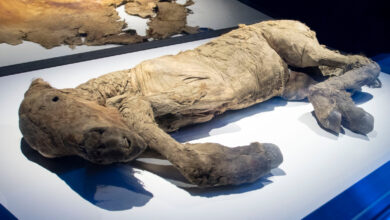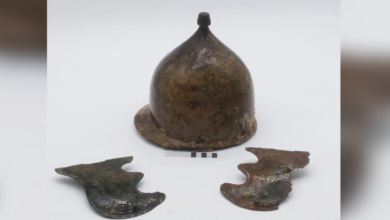‘Puzzling’ bronze discs adorned with lion heads discovered in Roman-era grave
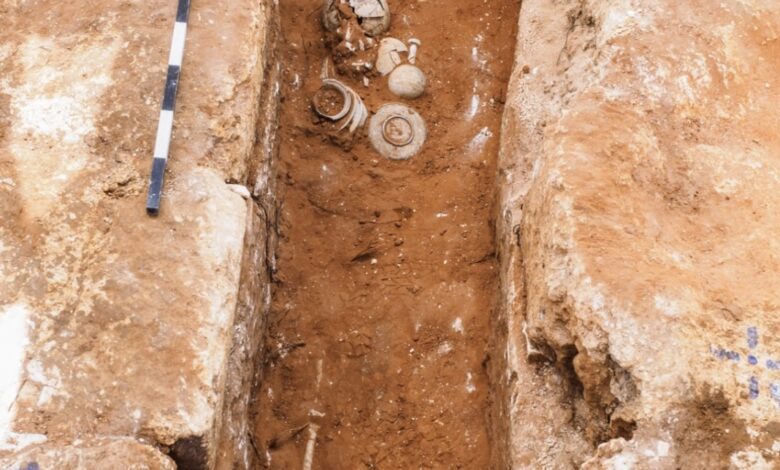
Archaeologists in Israel have discovered four “unique” bronze artifacts, adorned with elaborate 3D lion heads, that are roughly 1,900 years old.
Researchers uncovered the rare bronze discs during a salvage excavation conducted by the Israel Antiquities Authority (IAA) at a site named Khirbat Ibreika — located in the center of the country — prior to the laying of a railroad, according to a study published in the latest issue of the official IAA journal, ‘Atiqot.
The excavation, which took place in 2018, revealed eight Roman-era stone-lined graves. Archaeologists found the bronze discs in an orderly pile at the southern end of one of the graves, dated to the first or second century A.D.
Alongside the discs, archaeologists found four bronze ring-shaped handles that were likely once attached to the tops of the lions’ heads. This finding is an unusual one because while similar bronze discs with lion head reliefs have been found across the Roman world, the ring handles were usually attached through the mouth.
“This is a unique and rare set of finds,” Elie Haddad and Elisheva Zwiebel, the archaeologists who directed the Khirbat Ibreika excavation on behalf of the IAA and authors of the study, said in a statement.
Researchers also identified a large iron nail preserved with traces of wood, indicating the existence of a wooden coffin that did not survive, according to the report.
Related: 2,300-year-old grave in Israel contains remains of Greek courtesan who may have accompanied Alexander the Great’s army
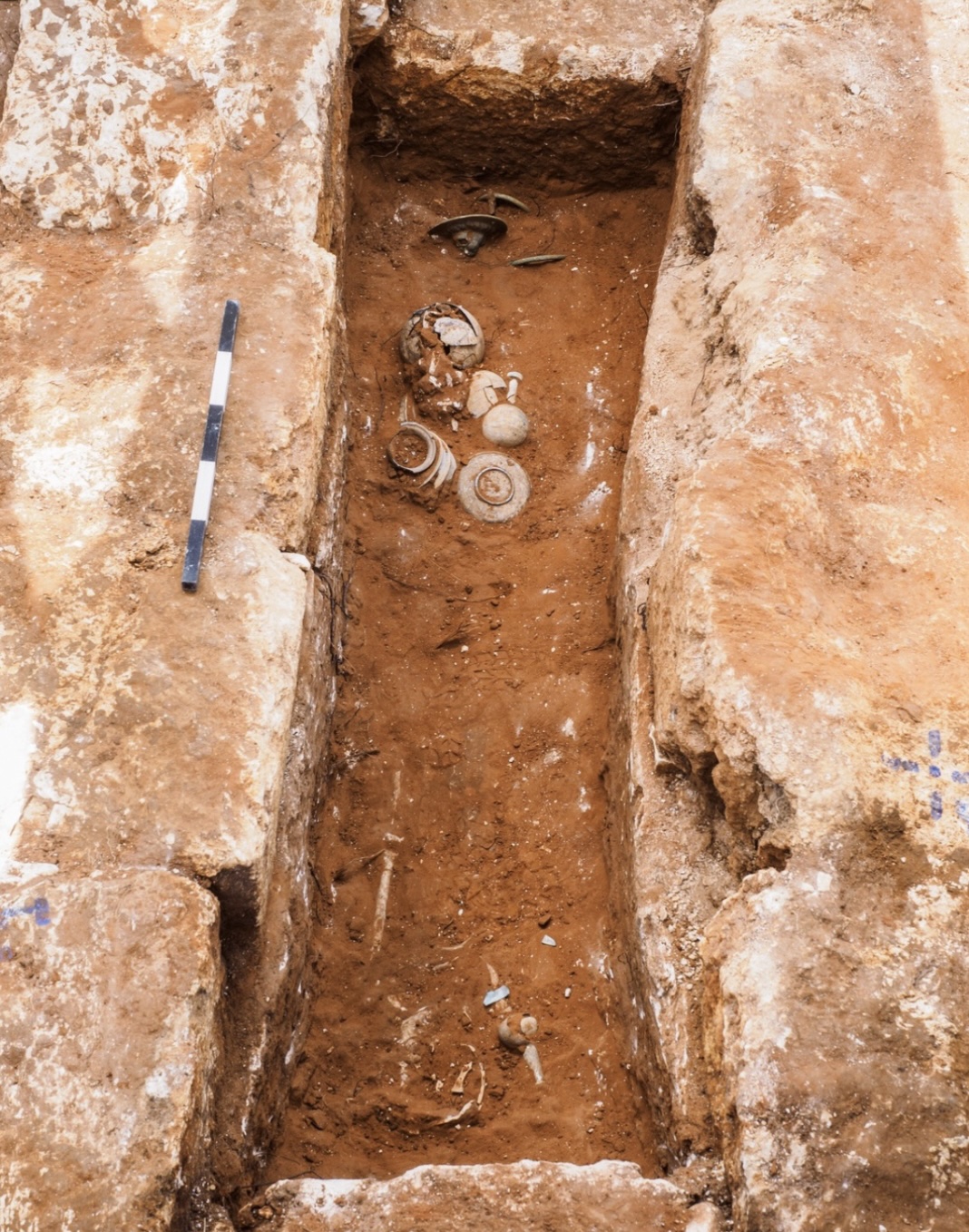
While the discs likely played a decorative role, the researchers propose that the bronze objects and attached rings may also have served as handles, enabling people to carry the coffin or lower it into the grave. They also suggest that it would have been possible to insert two long wooden rods through the rings, making the task of carrying the coffin easier.
But the authors acknowledge that one aspect of this hypothesis remains puzzling. “If the discs were coffin handles, why were they stacked in what seems to have been a deliberate pile on one side of the tomb? While it may be claimed that they fell off the wooden coffin during the burial ceremony, it seems unreasonable that all four discs fell on the same side,” the researchers wrote in the study.
This raises the possibility that the artifacts carried a special symbolic or ritual significance yet to be uncovered.
The lion was an important symbol throughout antiquity across various cultures and civilizations, with the animal frequently appearing in ancient art. It symbolized strength, courage and nobility, among other traits.
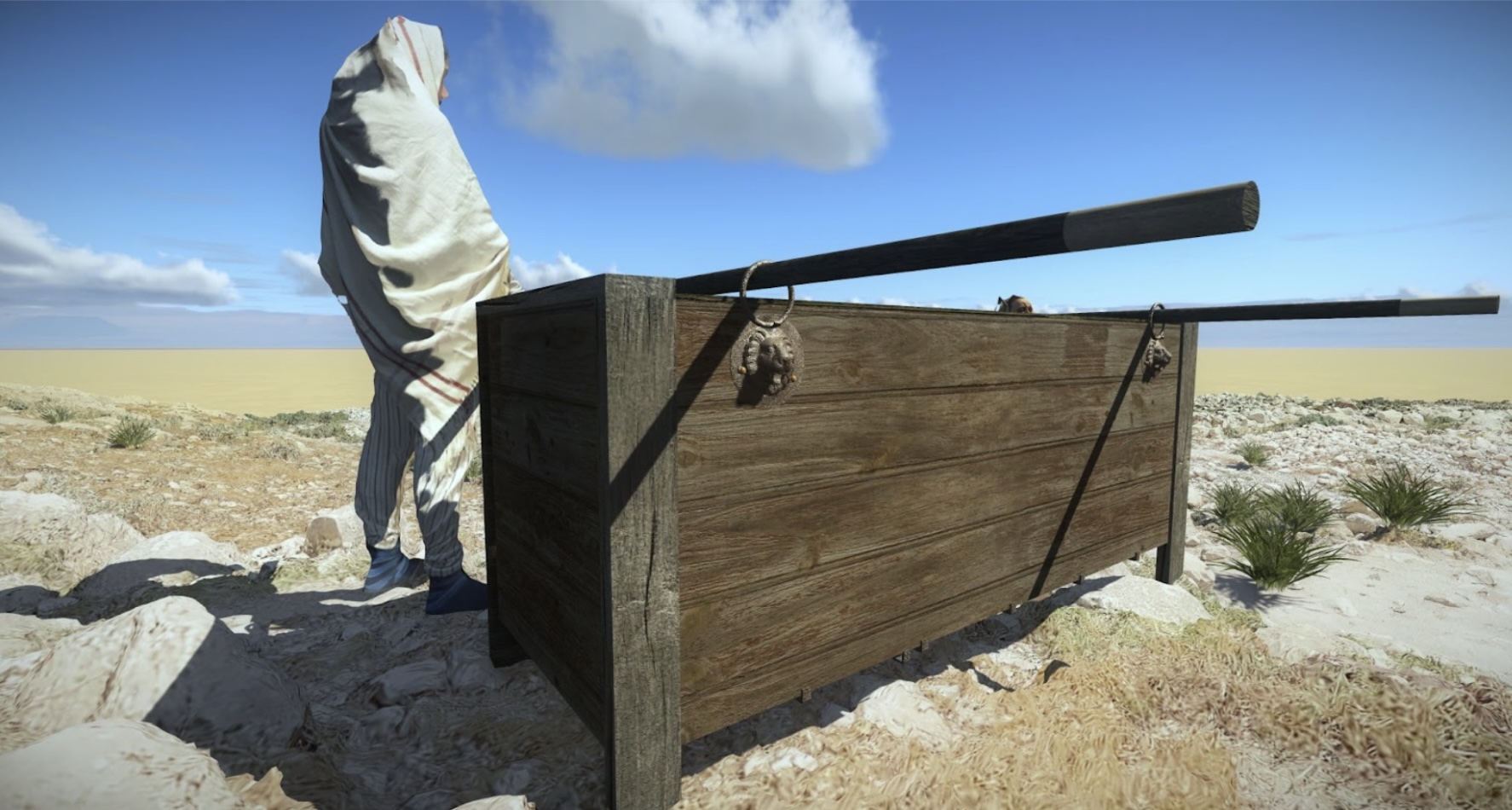
In the Greco-Roman world, lions were known as guardians of fountains, gates, palaces, cemeteries and temples, according to the study. In some cases, these animals were also considered to be protectors of the dead, according to a 2022 paper discussing Roman-era lion-headed coffin handles resembling the Khirbat Ibreika finds.
Considering this symbolism, the researchers propose that the lion motifs found in the Khirbat Ibreika grave may signify the deceased’s elevated rank or social standing.
It’s also possible, they noted, that the ring handles above the lions’ heads may represent the “wheel of the zodiac, the wheel of life,” they wrote in the study.
This interpretation was based on certain potential depictions of Aion — a Hellenistic deity associated with the cyclic nature of existence and the zodiac — in ancient art. Some scholars associate a naked, human-bodied, lion-headed figure entwined by a serpent (or serpents) with Aion. But this representation is not his classical portrayal — primarily appearing in ancient syncretic traditions — and remains subject to debate.
Source link



